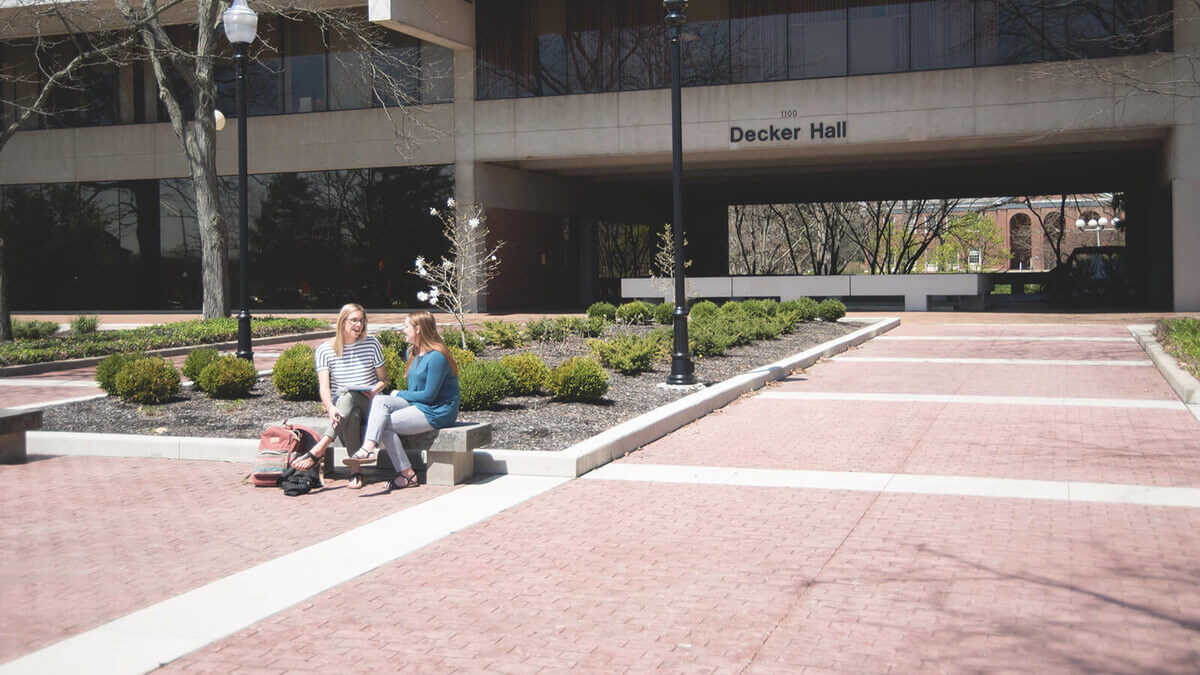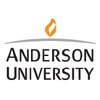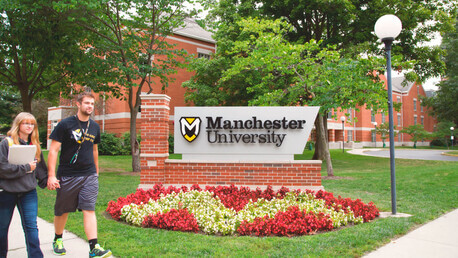


Anderson University
Overview
Anderson University is a private, liberal arts institution located in Anderson, Indiana, and it is affiliated with the Christian Church of God. AU’s mission is to educate for a life of faith and service in the church and society through their five core values: servant leadership, generosity, excellence, integrity, and responsibility. The university offers more than 60 undergraduate majors, 27 of which have 3-year degree options. They also maintains the Study, Serve, Share program (Tri-S), which offers short-term service and cultural trips, as well as study abroad options based on major. Attendance at chapel twice a week is mandatory, and students can further participate in spiritual life through campus ministries, small groups, the gospel choir, and more.
Virtual Tour
Tuition, Cost & Aid
Affordability & Cost
Discover how military service can help you pay for college
Explore Military Pathways| In-State Tuition In-state tuition is the tuition charged by institutions to those students who meet the state's or institution's residency requirements. In-district tuition is the tuition charged by the institution to those students residing in the locality in which they attend school and may be a lower rate than in-state tuition if offered by the institution. | $35,640 |
| Out-of-State Tuition Out-of-state tuition is the tuition charged by institutions to those students who do not meet the state’s or institution’s residency requirements. Out-of-district tuition is the tuition charged by the institution to those students not residing in the locality in which they attend school. | $35,640 |
Room and Board The weighted average for room and board and other expenses is generated as follows:
| $12,250 |
| Books and Supplies | $1500 |
Aid & Grants
Student Loans
Admissions
Key Admissions Stats
- Not for Profit
- Church of God
- Coed
Need Blind
This school does not consider an applicant’s financial situation when deciding admission
Admissions Requirements
Important Deadlines
| Application Type | Application Deadline | Reply Deadline |
|---|---|---|
| Fall Regular Decision | July 1 | June 1 |
Rolling Admissions
The college has rolling admissions, which means applications are accepted any time throughout the year.
Admitted Student Stats
Admissions Resources
Academics
Key Academic Stats
- Online Classes
- Online Undergrad Degrees
- Summer Sessions
- Some Programs Requires Co-Op/Internship
- Study Abroad
- Honors Program
- Teacher Certification Offered
Degrees and Majors
Majors
| A B M D | |
|---|---|
| BIOLOGICAL AND BIOMEDICAL SCIENCES | |
| BUSINESS, MANAGEMENT, MARKETING, AND RELATED SUPPORT SERVICES | ✓ ✓ ✓ ✓ |
| COMMUNICATION, JOURNALISM, AND RELATED PROGRAMS | |
| COMPUTER AND INFORMATION SCIENCES AND SUPPORT SERVICES | |
| EDUCATION | |
| ENGINEERING | |
| ENGLISH LANGUAGE AND LITERATURE/LETTERS | |
| FAMILY AND CONSUMER SCIENCES/HUMAN SCIENCES | |
| FOREIGN LANGUAGES, LITERATURES, AND LINGUISTICS | |
| HEALTH PROFESSIONS AND RELATED PROGRAMS | |
| HISTORY | |
| HOMELAND SECURITY, LAW ENFORCEMENT, FIREFIGHTING AND RELATED PROTECTIVE SERVICES | |
| LIBERAL ARTS AND SCIENCES, GENERAL STUDIES AND HUMANITIES | |
| MATHEMATICS AND STATISTICS | |
| MULTI/INTERDISCIPLINARY STUDIES | |
| PARKS, RECREATION, LEISURE, FITNESS, AND KINESIOLOGY | |
| PHILOSOPHY AND RELIGIOUS STUDIES | |
| PHYSICAL SCIENCES | |
| PSYCHOLOGY | |
| PUBLIC ADMINISTRATION AND SOCIAL SERVICE PROFESSIONS | |
| SOCIAL SCIENCES | |
| THEOLOGY AND RELIGIOUS VOCATIONS | |
| VISUAL AND PERFORMING ARTS |
Faculty Overview
Campus Life
Key Campus Stats
Housing
Athletics
- Baseball
- Basketball
- Cross Country
- Football
- Golf
- Lacrosse
- Soccer
- Swimming
- Tennis
- Track and Field
- Basketball
- Cross Country
- Golf
- Lacrosse
- Soccer
- Softball
- Swimming
- Tennis
- Track and Field
- Volleyball
Campus Safety
After Graduation
Post Grad Stats
REVIEWS
Read What Students Are SayingLiving on-campus has also taught me a lot about life in general. I've learned how to develop deeper relationships, manage my time between classes and social events, and how to become a better me! There are so many options at AU and dedicated people that can help you choose the best path in life and make the right choices.
Similar Colleges
 West Lafayette, IN
West Lafayette, IN Muncie, IN
Muncie, IN Indianapolis, IN
Indianapolis, IN Hanover, IN
Hanover, IN- Huntington, IN
 Indianapolis, IN
Indianapolis, IN Indianapolis, IN
Indianapolis, IN Terre Haute, IN
Terre Haute, IN Bloomington, IN
Bloomington, IN North Manchester, IN
North Manchester, IN Marion, IN
Marion, IN Upland, IN
Upland, IN